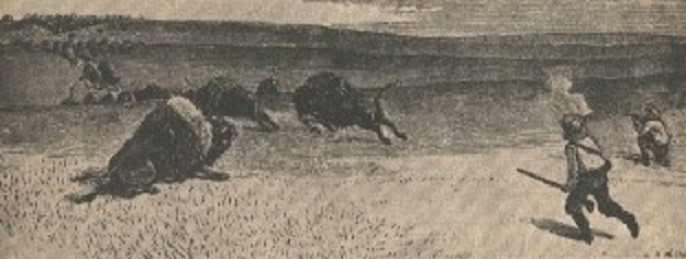Sir George Gore (1811-1878) also known as Lord Gore is the man who bloomed in the West in the 1850s. He was believed to be a member of the Royal family but was actually an Irish Commoner who succeeded to have a hereditary title in 1842. His actual name was grandiose Sir St George Gore, the 8th Baronet of Manor Gore in County Donegal.
Early Life of Sir George Gore
Gore was born in April 1811 in Sandymount on the south side Dublin to an aristocratic family which had some connection with its previous estates in Donegal. His early years of life were spent in a famous public school of Winchester and later into Oriel college of Oxford. Then he moved to Corkagh house in Dublin suburb of Clondalkin.
Although Gore was a landlord in the Valhalla of the Anglo-Irish during the famine because of his sporting instincts, he became an important footnote in the history of his country. He never really cared about his estates of around 7000 acres which provided him the annual income of around 3000$- 4000$ which was a very huge amount during that period for locals in the Rocky Mountains and in Western Plains.
He never married as he devoted his life to hunting and spent most of his time on travel and was able to use his earnings to his full-time passion for hunting.
Sir George Gore’s Hunting and Expeditions
Gore was fond of hunting and fishing and is known to have hunted largely in Scotland and Europe. While his journey he met British Adventurer William Stewart who made him conscious about the pickings in the forests and plains of Americas. He also guided him in the direction of American Fur Company who were dependent on hunting supplies and in dire need of western trading posts.
In March 1854 he arrived in St Louis to assemble the companions for his three-month expedition. His expedition lasted for three years starting from 1854 to 1857 traveling him to Colorado, Montana, Dakotas and Wyoming costing him about $50,000.This expedition consisted of 41 men, 3 ox-wagons, 6 Mule wagons, and 21 smaller carts. One of the wagons consisting of 75 rifles and 15 shotguns was entirely reserved for Gore’s personal arsenal. Two more wagons consisting of fishing tackles were loaded with them.

He himself also traveled in style and luxury. He possessed a large linen tent about 10 x 18 feet that were hung throughout with striped linings. He also had a bedstead made of brass that can be unscrewed and packed in limited space, and washstand of iron, an iron table and three cows who provided him milk. His wagons were also very specific which appeared like an open box-spring wagon that converted to a carriage or a bedroom.
Gore met Jim Bridger, a famous living Frontiersman, also known as “Old Gabe “in Fort Laramie of Wyoming during his expedition. Bridger was the only man to see Yellowstone park geysers and various marvels but never met a baronet. Jim Bridger described that Sir George had a habit to sleep till 11 O’clock in the morning, then take his bath and breakfast followed by that. Then his daily routine was to set out for hunting. He remained out till 10 O’clock at night and he often returned to his camp without expanding the Gazette of his exploits.
Difficulties
Gore and his expedition wandered through many land areas that were under Indian tribes who prohibited slaughtering of animals in their lands. Some groups stole their almost 21 horses and in another episode Blood, Indian tribe tried to confiscate more horses. While these crises were going on the company traded with another band of Crows obtained many horses from them very harmoniously. Many Indian authorities complained about excessive hunting and they protested that many animals were being killed that were the necessity for the survival of Indians
An Observer M.C.Meiggs also complained to the Secretary of the interior and on noticing that he had killed many cows and buffaloes, he demanded that “Gore is punishable for the killing of Cows for food if he was an Indian and also how such killing game was approved by the United States Government”. However, no actions were taken against Gore and he returned peacefully to Ireland in 1857.
After Life
During his lifetime Sir George Gore have killed many animals for sporting and trading. The exact number is still unknown but he himself said that he killed 1600 elk and deer’s, 2000 buffaloes and 105 bears for sport on an approximation. Other than this he also killed the number of antelopes, elk, deer and other animals for small games.
Despite being involved in many killings, he came to be known as a famous hunter with great skills and have left a mark on his topographical legacy of Colorado. There is an Introductory Gore pass (altitude of 9000 feet) and Gore Range bearing his name. He also managed to grab Gore Lake, Gore Canyon, Gore Mountain, Gore Creek, and Gore Wilderness. There was also Gore City which soon took the name of town Kiemmling. However, he is not equally honored at places he visited like Montana, North Dakota and Wyoming.
In 1875 after many years he returned to America for shooting birds and alligators of Swamps in Florida. He died in 1878 in Scotland after having spent his rest of life from the darkness of which he had appeared to leave his mark on the ecological landscape.